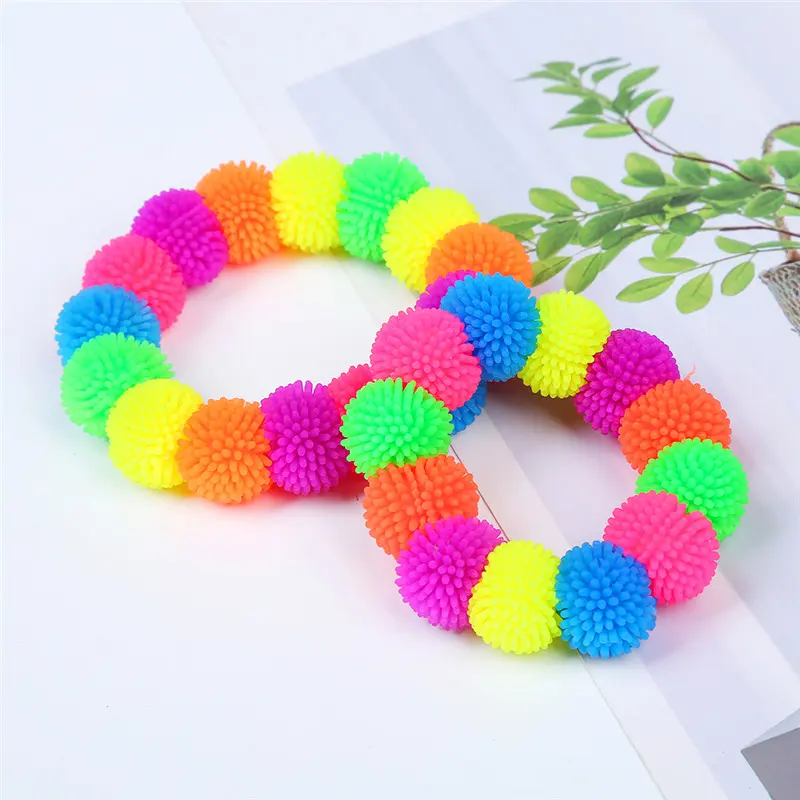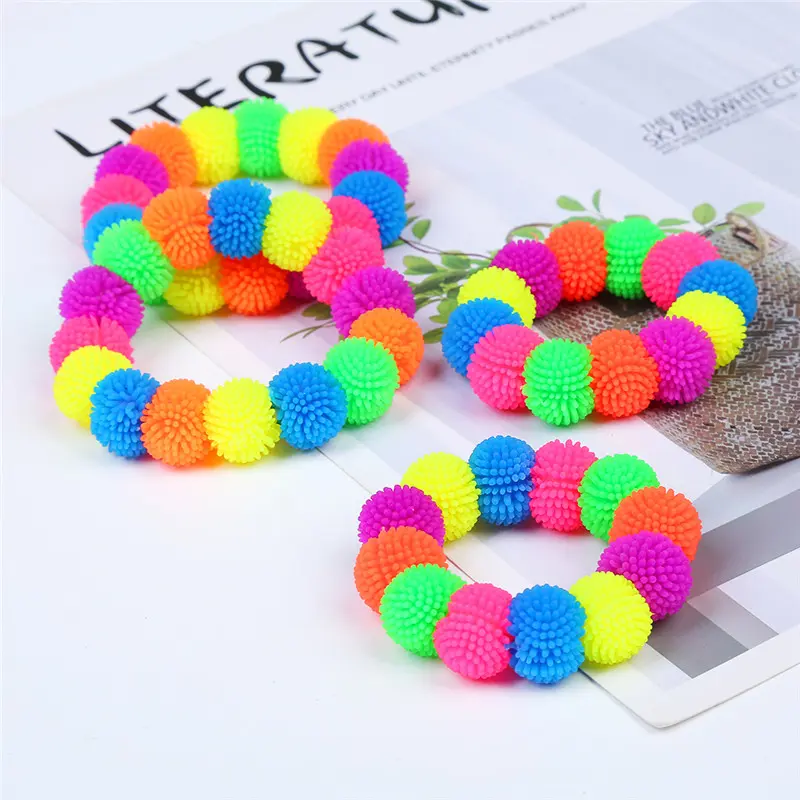Characteristics of Plush Sensory Toys
In the fields of childcare and special education, plush sensory toys are gradually transcending the definition of “ordinary toys” and becoming “multi-functional growth partners” in the eyes of parents, educators, and therapists. These toys, with their soft touch as their foundation, utilize multi-dimensional sensory design to meet the needs of people of different ages—from sensory enlightenment for infants and toddlers to emotional soothing for those with special needs. Their unique value lies in every detail. Today, we’ll delve into the core features of plush sensory toys and uncover why they have become a “must-have” across various scenarios.
I. “Multi-Dimensional Fusion” of Sensory Stimulation: Three-Dimensional Design that Activates Perception
The core competitiveness of plush sensory toys lies in their precise control of “sensory arousal.” Through the coordinated design of vision, touch, and hearing, they create an immersive sensory experience for users.
1. Tactile: Layered Tactile Sensations from “Touch” to “Exploration”
Unlike the monotonous softness of ordinary plush toys, high-quality sensory plush toys incorporate differentiated tactile materials. High-density short-pile or long-pile cotton provides a basic sense of warmth and envelopment. Additional embellishments include suede, corduroy, velvet, and other fabrics, creating a contrasting tactile experience of “smooth-rough” and “soft-slightly bouncy.” Some styles also feature embedded silicone particles, rubber bumps, or plush balls, providing distinct tactile feedback through pressing and kneading.
This design is particularly important for infants and young children: The 0-3 age period is a critical period for tactile development. By grasping, biting, and rubbing different materials, babies quickly develop a sense of “softness,” “hardness,” “roughness,” and “smoothness,” supporting neurological development. For children with autism or those with tactile sensitivity, gentle tactile stimulation can gradually reduce tactile defenses and help them better adapt to external contact.
2. Visual: The Dual Appeal of Low-Saturation Colors and Interesting Details
In terms of visual design, plush sensory toys adhere to the principle of “safe attraction.” The main body is primarily constructed in low-saturation colors such as off-white, light pink, and pale blue to avoid the effects of strong light on vision while creating a soothing visual atmosphere. Ingenious details are hidden within—embroidered 3D eyes, sewn striped patterns, and removable fabric embellishments—not only enhance the toy’s recognition but also guide the user’s attention to details and cultivate visual tracking skills.
Some high-end styles also incorporate fluorescent materials or temperature-sensitive color-changing features. The soft fluorescence in dim environments can soothe children who are afraid of the dark, while the temperature-sensitive material changes color when exposed to hand warmth, stimulating exploration. This transforms visual stimulation from “passive viewing” to “active interaction.”
3. Auditory: The soothing magic of soft sound effects
Audio is an invisible bonus for plush sensory toys. Built-in sound-generating devices are mostly lightweight: squeaking sounds when squeezed, rustling sounds when shaken, and soothing music triggered by pressing. The volume is controlled between 30-40 decibels, which neither startles the user nor creates an “action-feedback” connection through sound.
This design is particularly useful in specific situations: when soothing a crying baby, gentle sounds can distract them; when helping children with autism develop communication skills, sound feedback can encourage active interaction; and for the elderly, familiar, nostalgic melodies can evoke memories and aid cognitive rehabilitation.
II. “Extreme Control” of Material Safety: Comprehensive Guarantee from Raw Materials to Craftsmanship
The intimate nature of plush toys dictates that material safety is paramount. High-quality plush sensory toys meet far more stringent standards in material selection and production than ordinary toys, which is crucial to earning the trust of parents.
1. Core Fabric: Chewable Safety Certification
The main fabric must be OEKO-TEX® Standard 100 Level 1 (Infant Grade) certified, ensuring formaldehyde-free, azo-dyed, and heavy metal-free. Filling is made of either highly elastic PP cotton or corn fiber cotton. The former is fluffy and resilient, while the latter is biodegradable and skin-friendly, preventing skin irritation for those with allergies.
Taking advantage of infants’ natural chewing instincts, food-grade silicone is used in the mouth, nose, and ears, among other areas prone to chewing. Its hardness is controlled at 30-40 Shore A, ensuring chew resistance without damaging gums. High-strength cotton thread is used for stitching, with a minimum of 8 stitches per inch, to prevent exposed filling and the risk of ingestion.
2. Detailed Craftsmanship: A Smooth “Safety Wrap” Design
Safety details are hidden where they’re not visible: The toy’s embroidery pattern utilizes a “barb stitch” technique, resulting in a smooth, unprotruding surface. All decorative elements (such as buttons and zippers) are either embedded or secured via heat pressing, with a tensile strength test exceeding 50N (far exceeding the grip strength of a child). The edges are overlocked three times to prevent irritation from rubbing against the skin.
Washability is also a key consideration. High-quality products are machine washable at 30°C, retaining their shape and color after washing, ensuring hygiene and extending their lifespan. For obsessive-compulsive parents or institutional users, this feature significantly reduces maintenance costs.
3. “All-Age Coverage” for Scenario Adaptation: Diverse Values from Childcare to Rehabilitation
The appeal of plush sensory toys lies in their adaptability across various scenarios. Whether it’s family childcare, early childhood education institutions, or rehabilitation centers, they can find their appropriate functional value, achieving “multiple uses.” 1. Ages 0-6: Dual Roles of Sensory Development and Emotional Support
For infants and toddlers, toys serve as a sensory development tool: they learn about the world through touching different textures, develop fine motor skills through grasping, and build causal cognition through sound feedback. For preschoolers, they also serve as an emotional companion: cuddling a soft toy before bed can alleviate separation anxiety, and during role-playing, they can serve as a “talking point” to help children express their emotions.
Many parents report that plush sensory toys with the scent of family can also serve as an emotional connection during separations (such as when dropping off children at daycare or traveling), reducing their children’s anxiety.
2. Special Education: A Gentle Aid in Rehabilitation Training
In special education, plush sensory toys are highly cost-effective rehabilitation teaching aids. Tactile desensitization training for children with autism can gradually break down tactile defenses through games involving touching different materials from far to near. For children with developmental delays, sound-generating toys can help them imitate sounds and support language development. For children with attention deficit disorder, detachable toy parts can help cultivate concentration through assembly-and-disassembly games.
Rehabilitation therapists often customize toys with specific features: for example, embedding blocks of different shapes inside the toys so children can identify their shapes through touch, or designing adjustable straps around the limbs for easy attachment to wheelchairs or rehabilitation equipment.
3. Adults and Elderly: Emotional Soothing and Cognitive Support
Plush sensory toys aren’t just for children. For high-pressure professionals, their soft touch can relieve anxiety, making them a perfect stress reliever. For empty-nest elderly, toys with sound-generating functions can alleviate loneliness, and some models even include voice recording, allowing family members to listen to their reminders at any time. For Alzheimer’s patients, familiar toy shapes and sounds can evoke fragmented memories and aid cognitive training.
IV. Humanized Design: Detailed Considerations that Balance Practicality and Emotion
Beyond core functionality and safety, the humanized design of plush sensory toys further enhances their warmth, elevating them from “tools” to “partners.”
1. Size and Portability: Flexible Options for Different Scenarios
Sizes range from palm-sized to comfortable for sleeping: Mini sizes (5-10cm) can be attached to strollers or keychains for easy portability; medium sizes (30-50cm) are suitable for everyday companionship; and large sizes (80cm and above) cater to cuddling needs, making them particularly popular with children and the elderly.
Some models also feature a foldable design, reducing their volume by 60% when folded, saving storage space and making them easy to carry on the go. This design is particularly practical for parents on the go or rehabilitation therapists who require in-home services.
2. Personalization: Giving Toys “Exclusive Meaning”
High-end brands offer personalized customization services: embroidering the baby’s name and date of birth, printing and dyeing family photos, and recording family voice messages, turning toys into “one-of-a-kind keepsakes.” This customization not only enhances the product’s emotional value but also makes it a popular choice as a gift for mothers and babies, and as customized teaching aids for rehabilitation institutions.
3. Sustainability: Implementing Environmentally Friendly Concepts
With growing environmental awareness, more and more brands are using sustainable materials: recycled plush fabric made from recycled plastic bottles, biodegradable corn fiber filling, and glue-free stitching. This reduces environmental impact while also educating children about environmental issues. Some brands also offer “old toy recycling programs,” refurbishing and donating old toys to charitable organizations, extending the value of their products.
Conclusion: The “hidden value” of plush sensory toys lies in every interaction
On the surface, plush sensory toys appear to be “soft toys.” A deeper look reveals that they are “growth tools” that integrate sensory science, material engineering, and humanistic design. It awakens perception with multi-dimensional stimulation, protects health with strict safety standards, meets diverse needs with flexible scene adaptation, and conveys emotional warmth with detailed design.
Post time: Sep-19-2025

